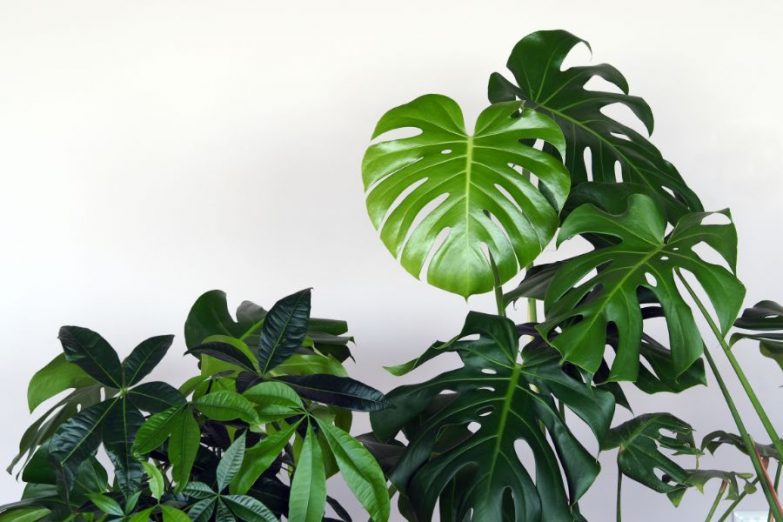If you have tried your hand at gardening, you might have seen the phrase “bright, indirect light”. Unfortunately, this term isn’t usually clearly defined so it can be tough to know exactly what it is. Luckily, we’re here to help you with that.
What is bright indirect light for plants? Bright Indirect light is when the sun’s rays don’t travel directly from the sun to your plant but, instead, bounce off something first. Plants in bright, indirect light will cast blurry, indistinct shadows. Bright indirect light is approximately 800-2000 foot candles.
To learn more about the different types of lighting for plants and how you can properly achieve bright, indirect light in your home, read on. It is not always easy to know whether your plant is receiving the right amount of light. We’ve put together this guide to answer your questions about lighting so that you can place your plants with confidence.
What is the Difference Between Direct Light and Indirect Light?
One of the confusing things about proper lighting for plants is the difference between direct light and indirect light. So, let’s take a closer look at what each of these terms means.
Direct Light: Direct sunlight is a pretty straightforward concept. This is when a plant receives direct, unobstructed sunlight. The unobstructed part is key here. You might not realize how many objects get in the way of direct sunlight throughout the day – think tree branches, houses, or anything that stands up high above the plants. Interestingly, direct light through a window is considerably less intense than direct sunlight outside.
Indirect Light: As we touched on above, indirect light is when the plant is in a light-filled environment but the sun’s rays are not directly hitting it. The area is still light because the sun reflects off or is refracted through other objects in the environment before hitting the plant directly. For example, light that shines through a curtain or a plant that is sitting on a shaded porch is in indirect light.
Middle Ground: As with anything in gardening, lighting it is not always so black-and-white. You might only be able to find an area that receives some direct light and some indirect light. Generally speaking, that is okay. It really depends on how much light your plant actually needs.
In practice, many gardeners also accept direct sun for part of the day as an appropriate example of bright, indirect light. For example, if your plant is near a window that only receives direct sunlight for a few hours in the morning, that is often accepted as a source of bright, indirect light.
How to Measure Bright Indirect Light?
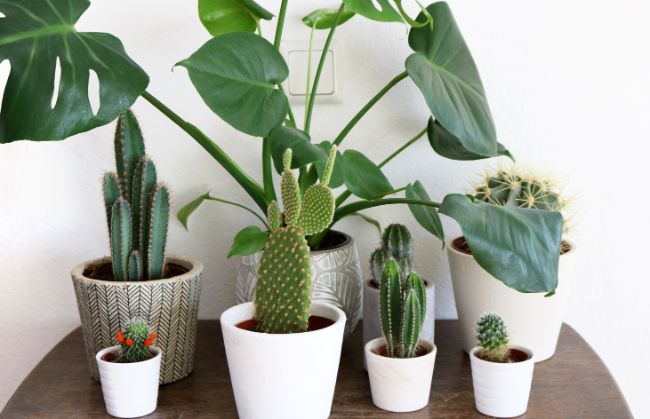
On top of knowing the definition, it is quite handy to know how to test for bright indirect light. Here, we will show you two methods of determining whether your plant is receiving indirect light and the intensity of that light.
Shadow Technique: A handy way to tell whether your plant is sitting in direct or indirect sunlight is with the shadow technique which allows you to gauge the type of sunlight based on the appearance of the shadow cast by the plant.
A sharply defined shadow with no blurry edges indicates direct light. This is because the sun hits the plant head-on and clearly cast a perfect shadow.
A shadow that is weak with indistinct or blurry edges indicates indirect light because the sun is not hitting the plant head-on and so does not produce a perfectly defined shadow.
A barely visible shadow indicates low light. There is still enough light for some degree of a shadow but it is very faint.
These are good rules of thumb to keep in mind when dealing with your plants. If you want a more accurate reading on the amount of light your plant is receiving, the best thing to do is use a light meter, which we will explore next.
Light Meter: A light meter is a tool that measures the intensity of the light that is currently shining with a unit of measurement called foot-candles. Of course, the difficulty here is that the measurement changes based on numerous factors, including the time of day, whether you are indoors or outdoors, and which direction the meter is facing.
Bright indirect light is approximately 800 and 2000 foot candles and varies based on where the plant is placed. But, if you combine the light meter reading with your understanding of what constitutes indirect light, you should be able to put together a more complete picture of how much light your plant is receiving.
How Do You Make Bright, Indirect Light?
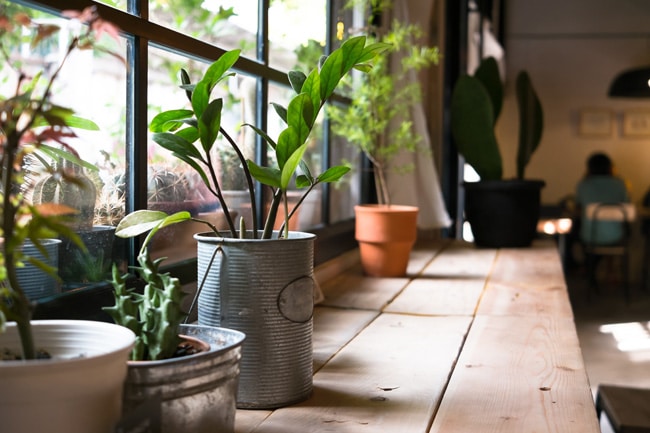
Perhaps you came to this article simply to get some examples of bright indirect light. As a general rule, think of a bright area where you can’t draw a direct line from the sun to your plant.
Indirect light is when something is obstructing the sun’s path – such as a window shade, tree branches, or anything else that sits between the plant and the sun.
Bright indirect light can also include when the plant is placed in an area that is not directly facing a window. Try standing in the room and determining whether you can directly view the sun from where your plant is placed. The distance from the window also influences the intensity of the light with the intensity lowering the further away from the window the plant is placed.
Other factors influence light that are less within your control including the seasons, time of day, and weather patterns that obstruct the sun. With these factors, you mostly want to have an understanding of the general patterns in your area.
Use this knowledge to account for how these factors influence average light levels. For example, in the winter, you might want to place your plant closer to a window to account for the lower overall daylight.
How to Increase or Decrease Light Levels?
Light levels are all about where your plants are placed. Whether indoors or outdoors, there are various ways to influence light levels.
Moving your plant into an unobstructed area is the easiest method of shifting light levels. If this is not an option, you can purchase an LED grow light to give your plant the extra light that it needs. Refer to our above definitions of direct and indirect light to best see how you can achieve the optimal light levels for your plant.
How Do I Know If My Plants Are Getting Enough Light?
The amount of light needed by a plant varies based on the species. Plants like succulents generally have higher light requirements, whereas Snake Plants and Cast Iron Plants can cope in remarkably dull conditions. If you need more detail, this site has articles on loads of common indoor plants which explain exactly how much light they need.
When in doubt, it is best to gather more information either before you buy a plant or shortly after. Do a quick search for the plant in question and you will find many dedicated gardeners who have created helpful resources about where best to grow that plant.
How To Tell If Light Levels Are Too High or Too Low?
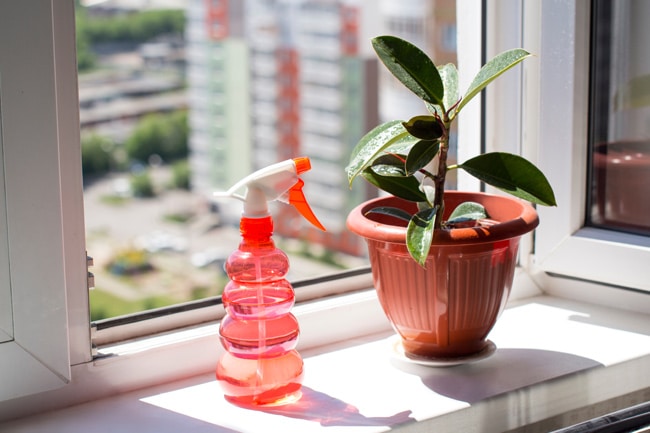
All plants are different so not every plant shows the same symptoms if they are receiving too much or insufficient levels of light. If your plant is experiencing issues, find a resource dedicated specifically to that plant. Generally speaking, though, many plants show certain symptoms in the face of too much or too little light:
Too Much Light: One of the main symptoms of a plant receiving too much light is the leaves becoming burnt. This looks like brown spots and scorched leaves. If your plant is being burned, be sure to move it into an area of lower light immediately.
Insufficient Light: A plant that is not receiving enough light often has trouble growing at a normal rate because it is not getting the energy it needs from photosynthesis. This often results in a plant that is weak and droopy and doesn’t produce as many leaves or flowers as it should.
If your plant has this sad appearance, move it into an area where it receives more light. Be sure to research the amount of light that specific plant species actually needs.
If A Location Gets A Few Hours Of Direct Light Per Day, But Is Mainly In Indirect Light, Is This Suitable For A Plant That Needs Bright Indirect Light?
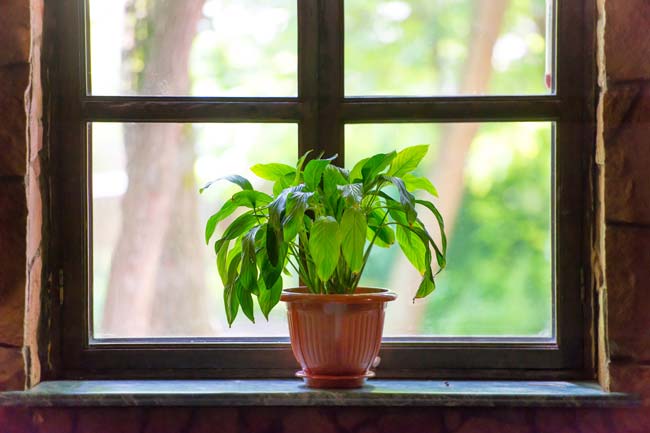
Usually, the answer to this question is yes. A plant that requires indirect light is usually fine if it receives a few hours of direct light per day. As a general rule of thumb, you should try to keep that number below four hours of direct sun.
Of course, it also depends on the type of plant you are talking about. You should tailor your approach to the type of plant you are trying to grow. So, if your plant is struggling with a little bit of direct sunlight then it might be best to avoid it altogether.
Conclusion
This article focused on one of the most consistently inconsistent variables in the plant world – indirect light. Not only is this term widely misunderstood but it can also be difficult to know where to place your plant so that it receives the desired amount of light.
Hopefully, we’ve armed you with the tools you need to understand indirect light and to test the amount of light a plant is receiving at any given time. Understand that it is an imperfect science and you might need to do some experimenting to find the perfect growing conditions for each plant.

